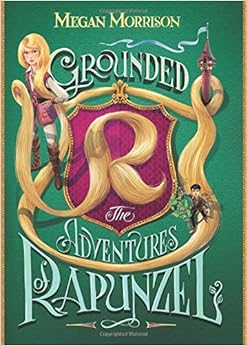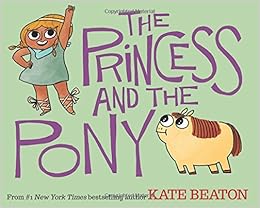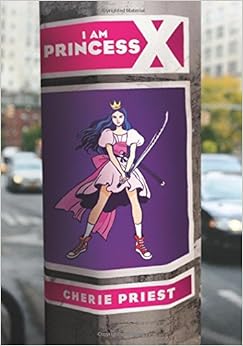[The CCBC-Net listserv is currently debating the state of multiculturalism/diversity in children's and YA books in 2014. I'm posting this e-mail I sent to the listserv about a year ago here for reference in this discussion. I also encourage readers to check out the great posts at the CBC Diversity Tumblr, particularly the recent Industry Q&A with Donna Bray.]
February 16, 2013
Hi Everyone,
I am a co-founding former member of the CBC Diversity Committee, and an editor at a large publishing house here in New York; and as such, I’d like to write and correct some misconceptions both about the committee and about publishing diverse books in general. (I am a former member of the committee because I chose to rotate off of it at the end of 2012 to let fresh voices come on; I do not speak for CBC Diversity officially here, but I support it 100%. And while I’m doing disclaimers, I’m not speaking for my company here either; these are strictly my views as an editor who has long published diverse books and authors and thus has been thinking and talking about these issues for years.)
The CBC Diversity Committee was originally founded by a small group of editors after conversations at a writers’ conference in, I believe, early 2009. We were all passionate about publishing books by and about people of varying races, ethnicities, religions, and sexualities, and we all had a number of these books already on our lists; and for a couple years, we met to discuss many of the issues that have been raised in this CCBC-Net discussion. However, we were also all editors, with time-consuming responsibilities to our beloved authors and illustrators and publishing houses, and it was difficult for us to get much momentum going as a group. In 2011, one of our members met with someone from the CBC, which had been thinking about diversity as well, and the CBC invited our group to become an official committee working on these questions.
In the year or so since, with the organizational support of the CBC and the truly wonderful people there, we’ve started a blog to foster discussions of the many facets of publishing diverse books and raise awareness of these books among the public; hosted an event for agents to introduce them to editors interested in publishing diverse books (beyond the committee members), a panel on creating covers and the awareness panel at ALA (which was not sponsored by ALA), and private discussions for publishers; launched a “Diversity 101” series on the blog to help educate children’s book professionals and general readers about the basics of various kinds of diversity (check out Cris Beam’s terrific post on transgenderism: http://www.cbcdiversity.com/2013/02/diversity-101-transgender-perspective.html); and reached out to high schools and Career Days around New York City to try to educate a more diverse population of students about the career opportunities available in publishing. We also created booklists featuring diverse authors and topics on our website; the books suggested come directly from CBC member publishers, so if the publisher of a particular book hasn’t included it on the list it sent along, then it’s not included on the CBC list.
Contrary to an earlier assertion, the committee does not think of itself as the one and only ”place to go” for books with diverse characters; but it is doing its best, with entirely volunteer efforts, to highlight those books and issues and get them more widely known. And very little of this industry action was happening before the committee existed! So the CBC Diversity Committee is on the side of everyone fighting to create more authentic and diverse books, and I am puzzled and grieved by commenters here who are treating the committee as if it’s the enemy, simply because it has not 100% matched their ideological standards of publishing purity, or solved all of the complexities of publishing diverse books.
And there are complexities! I could write an essay on each of these topics, but briefly:
The pipeline issue: We editors don’t see enormous numbers of manuscripts from writers of color, certainly not in percentages proportionate to the population, and we can’t publish manuscripts that don’t come to us.
The suitability issue: It’s a publishing fact of life that we must turn down 97% (guesstimate) of the manuscripts we see from writers of ANY race or ethnic background, because we can only take on so many books, and because many titles simply aren’t unique enough for publication, or right for our house or a particular editor’s list (as every editor has a slightly different definition of “good,” just as every reader does).
The staffing issue: It’s true that publishing houses and publishing staffs are overwhelmingly Caucasian in complexion — which is again partly a pipeline issue, as we see far more white applicants for jobs than we do people of color. (Which in turn ties into many larger socioeconomic factors: Publishing does not pay a great deal compared to being a lawyer or doctor or financier, say, so those industries siphon off a lot of prospective talent.) That’s one of the things the CBC Diversity Committee is designed to address, with our outreach to colleges and Career Days.
-- How CCBC-Net Readers Can Help --: If you know a smart young reader of color, particularly one in high school or college, tell them how books are made! Tell them it takes not just authors, but editors and publicity staff and salespeople, and they can be one of them. Take them to ALA or BEA so they can see these people in action. Tell them internships are available. Tell them about my blog post here about how to get into publishing: http://chavelaque.blogspot.com/2006/08/faq-2-how-do-i-become-book-editor.html, the blog posts linked at the bottom, and the “How I Got Into Publishing” Posts on the CBC Diversity blog. If there’s more awareness of these jobs among people of color, hopefully more of them will get into the industry.
The editorial issue: All editorial relationships require careful conversation, honesty, and sensitivity on both sides. When an editor is working cross-culturally, that necessitates an added layer of sensitivity, humility, and listening regarding these cultural issues, which might then require balance with the narrative and aesthetic needs of the book. This is another thing the CBC Diversity Committee is designed to do, is to help make editors aware of cultural sensitivities and mentor them in working cross-culturally.
Authors have responsibilities here too: to speak up for what’s important to them in the text; to do as much research and reading and listening and vetting as possible if they’re writing cross-culturally; to educate editors, sometimes, as a book’s editor will usually not be able to go into as much depth on a topic as the author will, simply because the editor has to monitor a large number of books and authors. Every editor-author relationship is different; every book is different. But contrary to the impression prior commenters here might have made, it is totally possible for an editor and an author with different ethnic backgrounds to publish books successfully and happily on both sides. (You can ask Francisco X. Stork and Lisa Yee on my own list, or Rita Williams-Garcia, Sherman Alexie, Kadir Nelson, Jacqueline Woodson, Joe Cepeda, Allen Say, Yuyi Morales . . .)
The sales issue: In thinking about the diversity question a few years back, I reviewed a decade of Publishers Weekly end-of-year sales roundups (the top 100 titles sold each year), and if you took out award winners and Dora the Explorer, there were very, very few faces of color on those lists. (The PW Top 100 numbers are not a very good measure, granted, but it was the best I could do in trying to consider sales across all houses, as sales figures are proprietary information.) Bestseller lists are not the be-all and end-all of publishing; we know full well that not every book can become a bestseller. But it is a Publishing Law that strong sales of one title encourage publishers and booksellers to take on similar titles.
-- How CCBC-Net Readers Can Help --: BUY BOOKS BY AND ABOUT PEOPLE OF COLOR. Oh my goodness, I can’t say this enough. Buy them, and then put them out on displays year-round, and handsell them to your customers, even those who are resistant. (Bonus points if the book features a person of color on the cover.) Show a strong pattern of support for these authors and books, even make a bestseller here, and that will change publishing more than all of our talk can.
And all of this plays into the marketing issue — how publishers and book creators reach “mirror” audiences (to use Rudine Simms Bishop’s excellent phrase; please read http://www.rif.org/us/literacy-resources/multicultural/mirrors-windows-and-sliding-glass-doors.htm if you’re unfamiliar with it); how we communicate with window audiences; how we can maximize our resources to maximize sales for the book. We talked about this a lot at the CBC Diversity Committee when I was on it, and we publishers are always trying to do better at it. No publisher WANTS to see any of its books fail — we all want to keep our jobs, for one thing! And those jobs are predicated on the success of our business and our books.
-- How CCBC-Net Readers Can Help --: Do indeed look for books by and about people of color in catalogs and at conferences and bookstores; and then TALK ABOUT THEM — not just in the “I could only find X number of authors” way (though it’s important to make those figures known), but in the “Look at these X number of awesome books I found at ALA and I’m so excited to read the ARCs!” way. Name those titles! Blog about them! Invite the author to speak or to Skype with your class! Retweet links about them! Bring them up here at CCBC-Net -- right now, in fact: If everyone on the list wrote in with their favorite Latino picture book of the last few years, it would increase awareness of those titles tenfold. (Here's mine, with an editorial bias alert: Welcome to My Neighborhood: A Barrio ABC, by Quiara Alegria Hudes, illustrated by Shino Arihara. Runner up: Tia Isa Wants a Car by Meg Medina, illustrated by Claudio Munoz.)
E-mail publishers to say you're glad to see them taking on diverse books and you’d like to see more. E-mail your local public library to encourage him or her to buy the book, and your kid’s teacher or school librarian (if you’re lucky) or school district to make them aware that it’s a title you’d love to see read more widely. I LOVE the idea raised here earlier about getting even a fraction of Chicago schools to buy a book — let’s figure out a way to make that happen! Positive reinforcement tends to be much more effective than shaming, with children and with children’s publishers.
And if you have ideas about where and how we publishers should be finding diverse authors, or marketing and promoting these diverse books in a way that we aren’t already — please, share that here! Our resources go only so far, but if there’s an opportunity we’re missing and a market we can grab, we’d love to know about it.
Books break through with support from not just publishing houses but readers – librarians, booksellers, book buyers, book bloggers. To say this louder: READERS MAKE BOOKS “HAPPEN,” not publishers. Every publisher can cite an incident in which they threw their entire marketing weight behind a book and it disappeared – and then that one book that nobody expected to break through at acquisition or even publication, that took off like a shot once that one librarian on a committee raved about it, or that one blogger, or just one kid talking to another kid talking to another on the playground. When publishers DO make books succeed, it’s most often because we people who work at publishing houses are readers too, and WE talk passionately about a book and get other people to read it. But the power is in readers’ hands foremost.
I’m sorry to have written at such length, and to have made authors and books of color an “issue” here when so many of the books are just great books in and of themselves. But I wanted to raise some of the practical complexities we editors face on the ground in trying to publish more diverse books — complexities that are real facts in our lives, and that I haven’t often seen raised in the discussion so far here or elsewhere. Editors and publishers and the CBC Diversity Committee are operating with limited resources, just like authors and librarians and everyone else on this list, but like you, we also work with the very best of intentions and hopes for creating great books for all readers. Thanks to all of you who support these books in whatever way you can.
With best wishes,
Cheryl Klein












